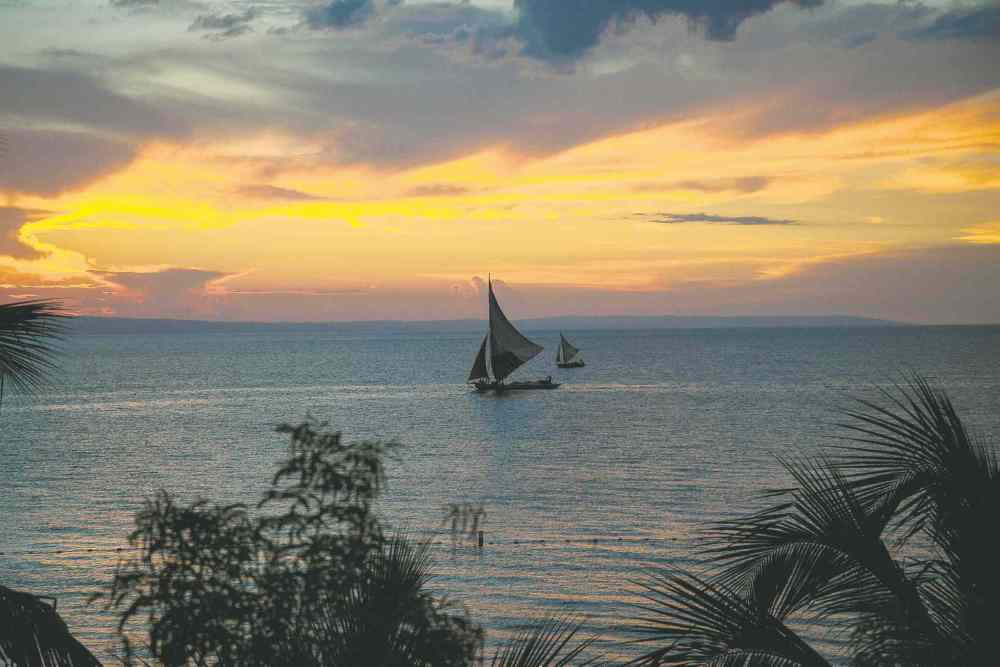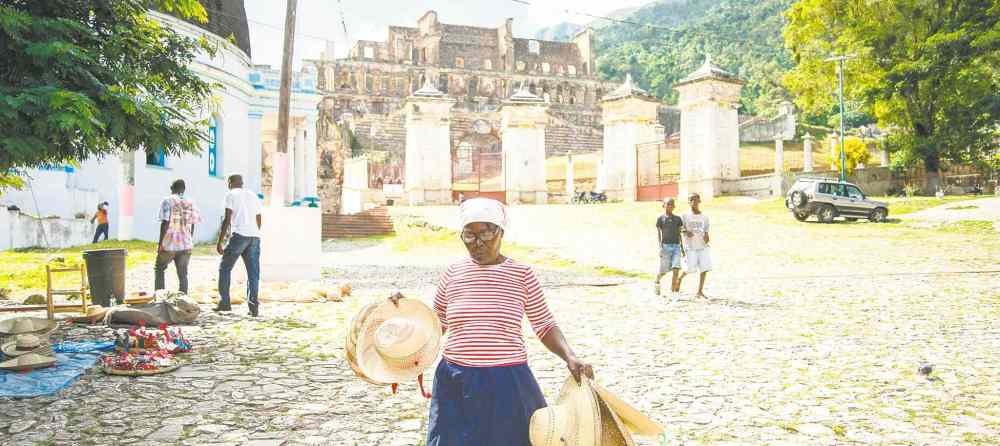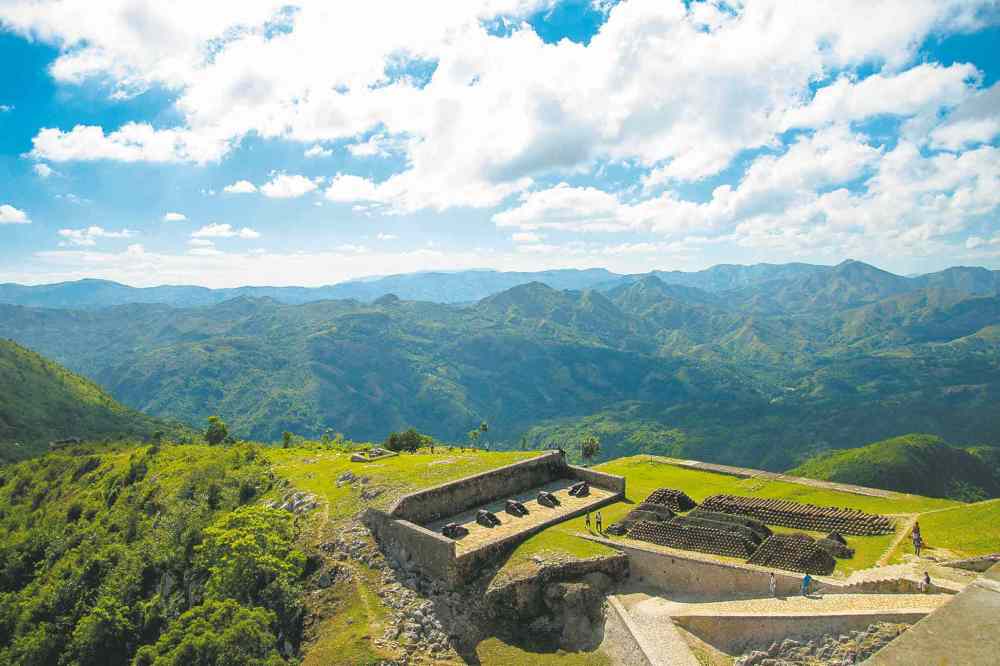Haiti unmasked
Dark for decades, history-rich Caribbean country once more embracing tourism
Advertisement
Read this article for free:
or
Already have an account? Log in here »
To continue reading, please subscribe:
Monthly Digital Subscription
$1 per week for 24 weeks*
- Enjoy unlimited reading on winnipegfreepress.com
- Read the E-Edition, our digital replica newspaper
- Access News Break, our award-winning app
- Play interactive puzzles
*Billed as $4.00 plus GST every four weeks. After 24 weeks, price increases to the regular rate of $19.00 plus GST every four weeks. Offer available to new and qualified returning subscribers only. Cancel any time.
Monthly Digital Subscription
$4.75/week*
- Enjoy unlimited reading on winnipegfreepress.com
- Read the E-Edition, our digital replica newspaper
- Access News Break, our award-winning app
- Play interactive puzzles
*Billed as $19 plus GST every four weeks. Cancel any time.
To continue reading, please subscribe:
Add Winnipeg Free Press access to your Brandon Sun subscription for only
$1 for the first 4 weeks*
*$1 will be added to your next bill. After your 4 weeks access is complete your rate will increase by $0.00 a X percent off the regular rate.
Read unlimited articles for free today:
or
Already have an account? Log in here »
Hey there, time traveller!
This article was published 05/04/2014 (4181 days ago), so information in it may no longer be current.
MILOT, Haiti — It took a ride on a minibus, a transfer to a flatbed truck and then a horseback trek up a rocky mountainside to get here.
We arrive jostled and sweaty and unprepared for the very thing we came for: La Citadelle Laferri re, a spectacular 200-year-old stone and brick fortress built by the freed slaves who forced out their powerful French colonizers. It sits atop a 910-metre-high peak in northern Haiti, surrounded in all directions by velvet-green mountains. If this were Tuscany or Andalusia, or even the Dominican Republic next door, this UNESCO heritage site would be filled with tourists.
But it’s quiet and almost deserted. On a clear, sunny day, there are only a dozen of us here, not including guides, in what may be one of the most captivating places on Earth.

That’s because Haiti is not anywhere near the top of most people’s bucket list. When they think Haiti, they don’t imagine glorious scenery or proud historic monuments — they picture poverty and despair. They remember the television footage of the deadly 2010 earthquake that toppled thousands of buildings in Port-au-Prince and surrounding cities and killed more than 300,000 people.
But while the rest of us have been feeling sorry for Haiti, Haiti’s been busy getting back on its feet. Though much remains to be done, most of the earthquake debris and tent camps have been cleared away and the government has embarked on an ambitious campaign to bolster tourism.
In Port-au-Prince on the Champ de Mars, the sprawling plaza outside the ruined National Palace, a 5,000-seat amphitheatre, surrounded by artisan booths and cafes, is expected to be ready this summer. A 175-room Marriott Hotel will open downtown in 2015, one of several new international luxury hotels. In January 2013, Air Transat began offering weekly direct flights and travel packages from Montreal to Haiti.
At the airport in Port-au-Prince, the whole 100-car taxi fleet is being replaced, and the government has flown in Haitian-born taxi drivers from Montreal to give the locals dispatch and customer-service lessons. Teachers from Montreal’s hotel and restaurant school have come to train a new generation of chefs, waiters and hotel workers.
“We have history, culture and natural beauty, and we have done colossal work to get ready to welcome tourists back to Haiti,” Tourism Minister Stephanie Villedrouin explained after lunch at Parc Historique de la Canne ê Sucre, an old sugar cane plantation converted into a museum and restaurant. “We don’t want charity. We want people to come to Haiti and eat and drink with us, listen to our music and be our guests.”
Villedrouin knows she can’t compete with the large, well-developed resorts in Cuba and the Dominican Republic. What she wants is for Haiti to become a different kind of destination, one for “cultural explorers” interested in food, history, art and music, or adventurers looking for something more than an all-inclusive week on the beach.
It’s not an impossible dream. Haiti was once known as the pearl of the Antilles. Movie stars and millionaires used to come to buy art, drink rum and soak up the sun. Air France flew twice a week from Paris to Port-au-Prince. Canadians and Americans filled the hotels.

One of Club Med’s most beautiful resorts was built along the C”te des Arcadins, a stretch of sandy white beaches and hidden coves nestled under steep mountains, a 45-minute drive south of the capital. But the brutal dictatorship of Papa Doc Duvalier and successive decades of political unrest put an end to the golden era. The Club Med closed, and the tourists stayed away.
Slowly, visitors are returning, many of them expatriates, business people, the sons and daughters of those who left in droves in the 1960s and ’70s. The old Club Med, with its fabulous modernist architecture, has reopened as a less luxurious Haitian-owned resort called Club Indigo, with the same exquisite beaches and grounds. Not far away, the Wahoo Bay Beach Club and Resort offers boutique-hotel-style rooms set amid lush gardens overlooking the turquoise sea.
Still, a vacation in Haiti isn’t for the faint-hearted. The roads are potholed and garbage-strewn. Protests erupt sporadically and sometimes turn violent, and there’s no overlooking the extreme poverty in which large segments of the population live. The best way to visit Haiti is on an organized tour or with a local guide such as Tour Haiti.
Jean Cyril Pressoir, who has lived all his life in Port-au-Prince, except for three years in Montreal studying anthropology, runs Tour Haiti with his father, offering tailor-made private and group tours all over the country. A swashbuckler of a guide who wears beaded bracelets and a madras shirt, Pressoir has a way of making a place come alive.
He takes visitors into his favourite restaurants and bars and sneaks them into hidden home distilleries for a shot. He organizes bike tours, museum visits and hikes to distant waterfalls. He knows where there’s voodoo rock playing on Thursday night and which street seller makes the best griot pork.
“We may have tons of problems, but we have soul. We have magic. Haiti is authentic,” Pressoir says.

Here are six additional reasons to go to Haiti:
1: The colour: Haiti is one continuous swirl of pattern and colour. Children in green-, blue- or red-checked gingham uniforms gather for an after-school snack. Pink and turquoise plastic kitchen utensils are piled for sale next to mountains of orange, yellow and green citrus fruits at the market. Lottery kiosks, store signs and wall murals are painted with stencilled letters and crazy patterns straight out of a pop art show. In Cap-Haitien, Haiti’s second-largest city, the houses are all turquoise and apricot, with white gingerbread trim.
2: Street life: Everything in Haiti happens in the street. Every square inch of sidewalk and roadside is taken up by food carts and street sellers. Women carry coolers of soft drinks, baskets of fruit, even potted plants, on their heads as they weave their way between tap tap buses, which are gaily painted buses or pick up trucks that serve as share taxis in Haiti. Carpenters, shoemakers and hairdressers set their tools on makeshift tables in front of their houses and go about their day’s work. At the corner, there’s a lineup for barbecue chicken sizzling on a drum-can grill. It winds past an ad hoc antique store selling armchairs in the style of Louis XV.
3: The beach: Haiti’s north and south coasts boast some of the most pristine white-sand beaches in the Caribbean, some accessible only by boat. Walk for kilometres and never see another soul. In the north, outside Cap-Haetien, take a water taxi to one of Labadee’s secluded coves or head for Cormier Plage, a beautiful private resort with two hectares of beachfront and an extraordinary beachside bar. In the south, the historic coffee-export town of Jacmel features Haiti’s most scenic swimming spots. And along the C”te des Arcadins, not far from Port-au-Prince, kilometres of untouched beaches are dotted with small family-owned resorts that offer boat rides, snorkelling, deep-sea fishing and other water sports.
4: The rum: Rum is Haiti’s national drink, and Barbancourt is the rum of rums. The Haitian cocktail of choice is the lime-intense rum sour. Taste the five-star Barbancourt reserve special on ice with a zest of lemon, or sip 15-year-old Reserve du Domaine from a snifter, as you would cognac. (Just remember to spill out a few drops before taking your first sip, as Haitians do. A gift to the spirits.) Visit the Barbancourt Distillery, built in the middle of a sugar cane plantation in Damiens, 16 kilometres outside of Port-au-Prince. A mecca for serious rum drinkers, it has been run by the same family since it opened in 1862. Watch the truckloads of sugar cane come in for mashing, fermenting, distilling and bottling, then relax on the terrace out back and sample the end result. Group tours are available by prior arrangement. Individual visitors are welcome Monday to Friday between 10 a.m. and 1 p.m.
5: The art: Haitian art is bold, colourful, shocking. Some of Haiti’s best-known modern artists were members of the Saint-Soleil school, which revived and reinterpreted primitive art. It’s a style Petion-Ville art dealer Georges Nader describes as “a little voodoo, a little mystical, a little political commentary.” Their work commands thousands of dollars and is sold in galleries around the world and at Galerie d’art Nader, which is the largest art gallery in the Caribbean. But at the Iron Market in Port-au-Prince and on just about every bend in the road, landscapes, abstract portraits, and voodoo-inspired wood and stone masks and sculptures sell for much, much less. In Village de Noailles, northeast of Port-au-Prince, hammers hitting metal provide the ambient sound. The 60 or so blacksmiths and metal workers who live and work here create carved iron sculptures from oil drums, car parts and recycled sheet metal, taking their inspiration from nature, and voodoo and Christian religious symbols.

6: The food: Haiti’s culinary heritage is a source of great pride. The food is bold and zesty, a mix of Creole and French cooking that makes liberal use of garlic, hot chili peppers and citrus.
— Postmedia Network Inc. 2014

